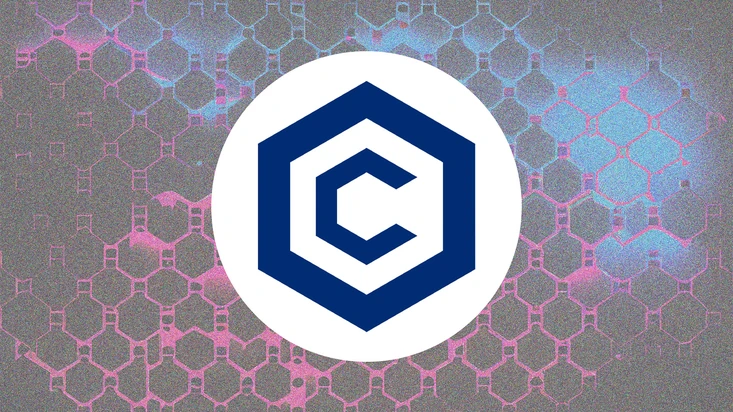
About Cronos
Cronos is the Ethereum-compatible layer 1 blockchain network built on the Cosmos SDK. Cronos can seamlessly integrate with both Ethereum and Cosmos-based ecosystems, facilitating the effortless migration of Ethereum smart contracts and decentralized apps (dApps).
Launched by Crypto.com, a renowned cryptocurrency exchange, Cronos is one of the two blockchains under the company's umbrella. It holds the distinctive role of being the EVM-compatible sidechain to the Crypto.org chain. Both blockchains are products of Crypto.com, a long-standing company in the cryptocurrency space, established in June 2016, and headquartered in Switzerland.
Leveraging the Inter-Blockchain Communication (IBC) protocol, Cronos enables efficient interaction not only with the Crypto.org chain but also with other blockchains within the Cosmos ecosystem.
The Cronos blockchain effectively collaborates with both the Ethereum and Cosmos ecosystems, fostering decentralized finance (DeFi), non-fungible tokens (NFTs), and the Metaverse. Its primary objective is to significantly expand the Web3 user community by equipping developers with the ability to seamlessly migrate apps and crypto assets from other chains, offering low-cost transactions, high throughput, and swift finality.
Cronos Price
The current CRO price is $0,059439 USD with a market cap of $1 501 619 886 USD. CRO has circulating supply of 25 263 013 692 CRO coins and a maximum supply of 30 263 013 692 CRO coins.
CRO can be purchased on a variety of centralized and decentralized exchanges including currently OKX, Bitrue, Bybit, Coinbase Exchange, Uniswap and etc.
How Does Cronos Work?
At the heart of Cronos are Cosmos Software Development Kit (SDK) and Ethermint, an open-source project that serves as the engine for the rapid migration of applications and smart contracts from Ethereum and other Ethereum Virtual Machine (EVM)-compatible chains. This feature empowers developers to effortlessly transition their existing applications and crypto assets from various chains to Cronos.
The Cosmos SDK is a framework for building blockchain applications. It provides developers with a set of modular tools and libraries that simplify the process of creating custom, secure, and scalable blockchain solutions. Essentially, it's the foundation that allows developers to construct interoperable blockchains within the Cosmos ecosystem.
Cronos boasts of multichain interoperability, a feature that allows users to smoothly execute digital asset transfers across other Layer-2 EVM chains and Layer-1 EVM chains within the Cosmos ecosystem. This is made possible through the Inter-Blockchain Communication protocol (IBC), a protocol that facilitates Cronos's interaction with other IBC-enabled chains.
Cronos operates as a Proof of Authority (PoA) blockchain, which employs a Tendermint Core BFT Proof-of-Stake mechanism. PoA maintains security through a selection of experienced and thoroughly vetted validators. Validators are tasked with signing or proposing a block in each consensus round. To motivate validator nodes to operate the network, rewards are distributed among validators based on their performance and the number of staked tokens.
There are several actions by validators that can lead to penalties on Cronos, such as double-signing (signing two blocks with the same block height) and downtime (missing a certain number of the previous 10,000 blocks). If a validator exceeds the limit of missed blocks, they will be removed from the active set. Penalties can range from the loss of some amount of the rate, suspension of network functions for a certain period, to a pause in receiving rewards.
CRO is the native token of Cronos and can be utilized to cover transaction costs on both Cronos and Crypto.com blockchains. It's also employed for payments across various Crypto.com products, including the Crypto pay app and Visa Cards, and to cover gas fees on Cronos.
Moreover, CRO token holders can engage in the governance of Cronos. Possessing the token empowers holders with the capacity to propose initiatives, finance proposals, and cast votes. By staking CRO on the Cronos platform, holders can participate as either a delegator or a node operator within the network.
Initially, CRO had a total supply of 100 billion. However, this has been revised to 30 billion following Crypto.com's announcement on February 22, 2021, to burn 70 billion CRO.
What is Cronos Used For?
Cronos' compatibility with the Ethereum Virtual Machine (EVM) and integration with the Inter-Blockchain Communication (IBC) protocol lends itself to numerous practical applications. This ability to easily integrate with existing ecosystems has given rise to a plethora of potential use cases, from decentralized finance (DeFi) and non-fungible tokens (NFTs) to gaming and the Metaverse.
Management
The inception of Cronos took place on November 8th, 2021, operating in tandem with the Crypto.org blockchain - the backbone that fuels the Pay feature of Crypto.com. Crypto.com, the creator of these two blockchains and is headquartered in Switzerland.
Originally known as Monaco Technology GmbH, the cryptocurrency payments company was co-founded by Kris Marszalek, Rafael Melo, Gary Or, and Bobby Bao. The firm later underwent a rebranding to become Crypto.com. Accompanying this change was a transition from its platform token originally called Monaco Coin (MCO) to CRO (Crypto.com Coin). With the roll-out of the Crypto.org blockchain, the company again renamed the token to Cronos, whilst maintaining the ticker symbol as CRO.
Now Cronos is managed by Cronos Labs a startup accelerator and ecosystem development fund, which focuses on Decentralized Finance and blockchain games, and on the development of the Cronos chain ecosystem.












